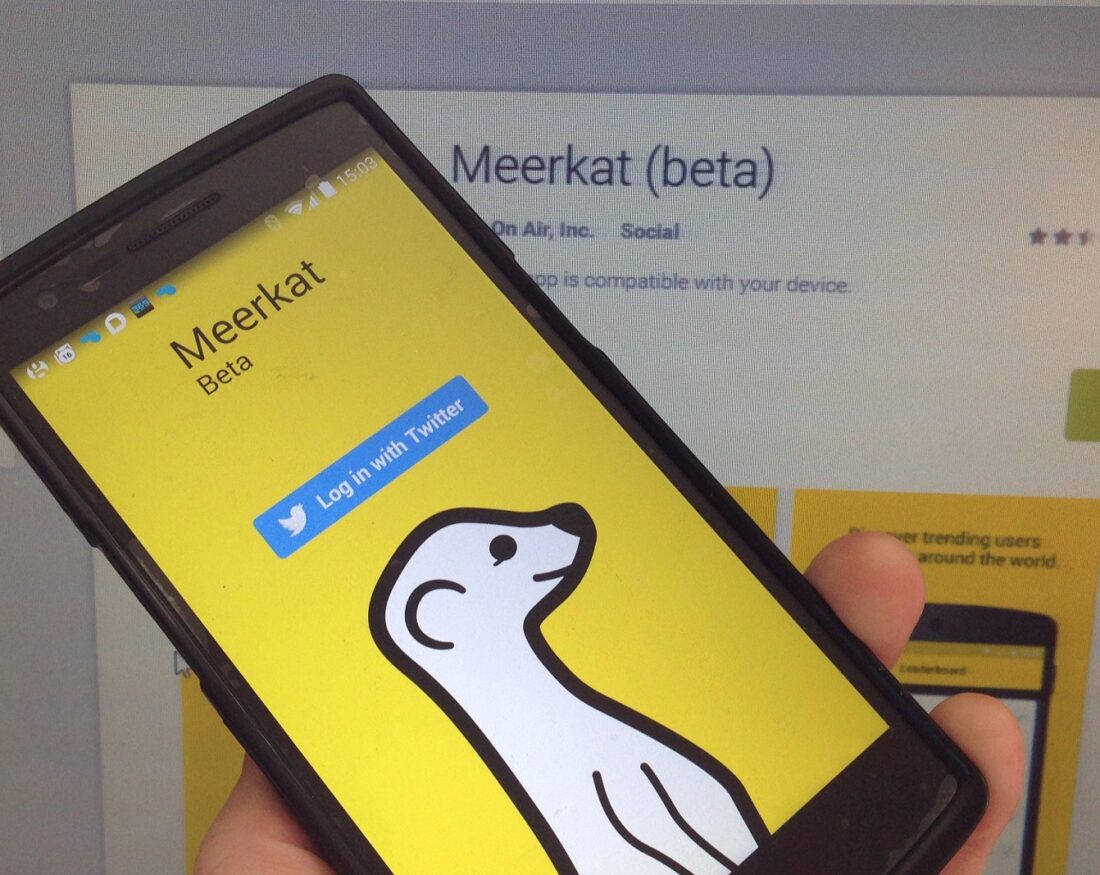
Meerkat’s Journey: A Brief Overview of the Live-Streaming Phenomenon
The rapid advancement of technology has given rise to various platforms that cater to the ever-evolving demands of the digital age. One such platform was the Meerkat app, which took the social media world by storm in 2015. Known for its live-streaming capabilities, Meerkat quickly gained popularity before eventually meeting its demise. As a pioneer in mobile live-streaming, Meerkat’s story offers valuable insights into the challenges and opportunities faced by new platforms.
In this article, we will delve into the history of the Meerkat app, understand why it stopped working, and explore its alternatives in today’s digital landscape, examining how the live-streaming ecosystem has evolved since Meerkat’s time.
History
The Beginning
The Meerkat app was developed by Life On Air Inc., a startup company founded by Ben Rubin, Itai Danino, and Uri Haramati. The app was launched in February 2015 and quickly gained traction at the South by Southwest (SXSW) festival held in Austin, Texas, that same year. Meerkat allowed users to live-stream video content directly from their mobile devices to their Twitter followers, marking a significant shift in how people shared their experiences in real time.
Rapid Growth
The app’s popularity grew exponentially in the months following its launch. Meerkat leveraged the existing user base of Twitter and offered an easy-to-use interface, making it a hit among users who wanted to share live video content. The app’s growth was fueled by a series of high-profile events and celebrity endorsements, including the likes of Jimmy Fallon, Madonna, and Ashton Kutcher. At its peak, Meerkat had more than 2 million registered users.
Funding and Partnerships
In March 2015, Life On Air Inc. raised $14 million in Series B funding, led by Greylock Partners, with participation from existing investors Aleph, Broadway Video Ventures, and others. The investment helped the company grow and expand its product offerings. Meerkat also formed partnerships with various media outlets, including The Huffington Post and TMZ, to increase its reach and visibility.
Why Meerkat Stopped Working
Twitter’s Periscope Acquisition
One of the major factors that contributed to Meerkat’s downfall was the acquisition of rival live-streaming app Periscope by Twitter in March 2015. Just weeks after Meerkat’s launch, Twitter debuted Periscope, which offered similar functionality but with the added advantage of seamless integration with Twitter’s platform. As a result, Periscope quickly gained users and started to overshadow Meerkat.
Limited API Access
To further solidify Periscope’s position in the market, Twitter limited Meerkat’s access to its social graph, making it more difficult for users to find and follow their friends on the app. This move hindered Meerkat’s growth, as users had to manually search for and follow other users, making the overall experience less intuitive and user-friendly.
Competition from Facebook
In August 2015, Facebook introduced its live-streaming feature called “Facebook Live,” which allowed users to broadcast video content directly from their Facebook profiles. Given Facebook’s enormous user base, this move posed a significant threat to both Meerkat and Periscope. Facebook Live provided a familiar platform for users to share their live video content, further eroding Meerkat’s market share.
The Shift to Houseparty
Faced with mounting competition and a declining user base, Meerkat’s team decided to pivot towards a new app called Houseparty in September 2016. Houseparty was a group video chat app that focused on more intimate, private conversations among friends. As a result, the Meerkat app was removed from the App Store and Google Play, officially marking its end.
Alternatives
Periscope
Periscope, the app that played a significant role in Meerkat’s demise, continued to grow after its acquisition by Twitter. With seamless integration into the Twitter platform and additional features like replays and live comments, Periscope became a preferred choice for users seeking a live-streaming platform. However, in March 2021, Twitter announced the shutdown of Periscope, integrating its features directly into the Twitter app.
Facebook Live
Facebook Live remains one of the most popular live-streaming platforms due to its ease of use and integration with the widely used social media platform. Users can broadcast live videos to their friends, followers, and even public audiences directly from their Facebook profiles. With features such as real-time comments, reactions, and analytics, Facebook Live has become a go-to choice for businesses and individuals alike.
Instagram Live
Instagram, owned by Facebook, introduced the Instagram Live feature as part of its Instagram Stories offering in 2016. This feature allows users to broadcast live video content to their followers, who can engage through comments and reactions. The live videos disappear after they end, adding a sense of urgency for viewers to tune in while the broadcast is happening. Instagram Live has become popular among influencers, celebrities, and users who want to share real-time content with their followers.
YouTube Live
YouTube, the leading video-sharing platform, offers a live-streaming feature called YouTube Live. This feature enables content creators to broadcast live video content to their subscribers and the public, depending on their chosen settings. YouTube Live offers advanced features such as monetization, live chat, and analytics, making it a preferred choice for professional content creators and businesses.
Twitch
Twitch, owned by Amazon, is a live-streaming platform primarily focused on video game content, including gameplay, esports, and gaming-related talk shows. However, Twitch has also expanded into other categories such as music, art, and lifestyle. With features like live chat, channel subscriptions, and donations, Twitch has become a popular choice for gamers and content creators looking to engage with their audiences in real time.
Conclusion
The Meerkat app made a brief yet significant impact on the live-streaming world, demonstrating the volatile nature of the digital landscape and the intense competition it fosters. Its rapid rise and fall underscore the need for constant innovation and adaptability in this space.
Although Meerkat is no longer active, its influence persists through the ongoing evolution of numerous live-streaming platforms catering to modern user demands. These platforms continue to redefine how people share and consume content in real time, ensuring that Meerkat’s legacy lives on in the digital age.





